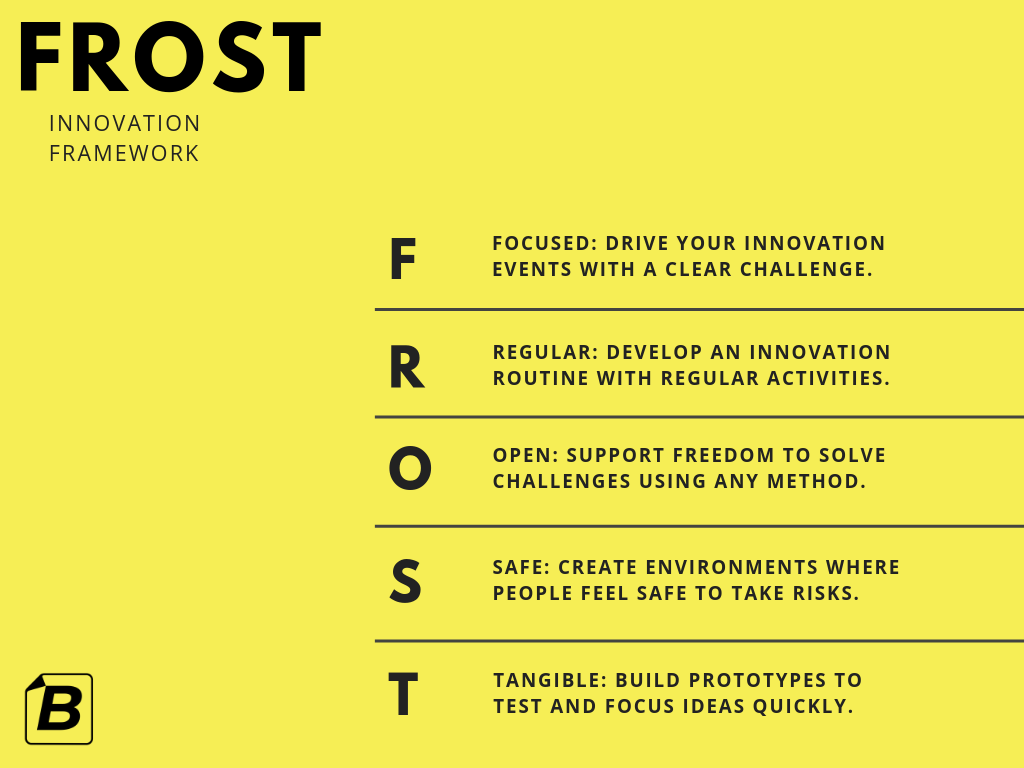
Sneak preview of the FROST Innovation Framework structure.
Continue reading The FROST Innovation Framework – Overview
– How to Get You Started with tools and tips
– How to Achieve Success with an Agile Product Roadmap
– Agile Project Management Templates
– Product Roadmap Templates
Most of what you need for Agile projects.

Sneak preview of the FROST Innovation Framework structure.
Continue reading The FROST Innovation Framework – Overview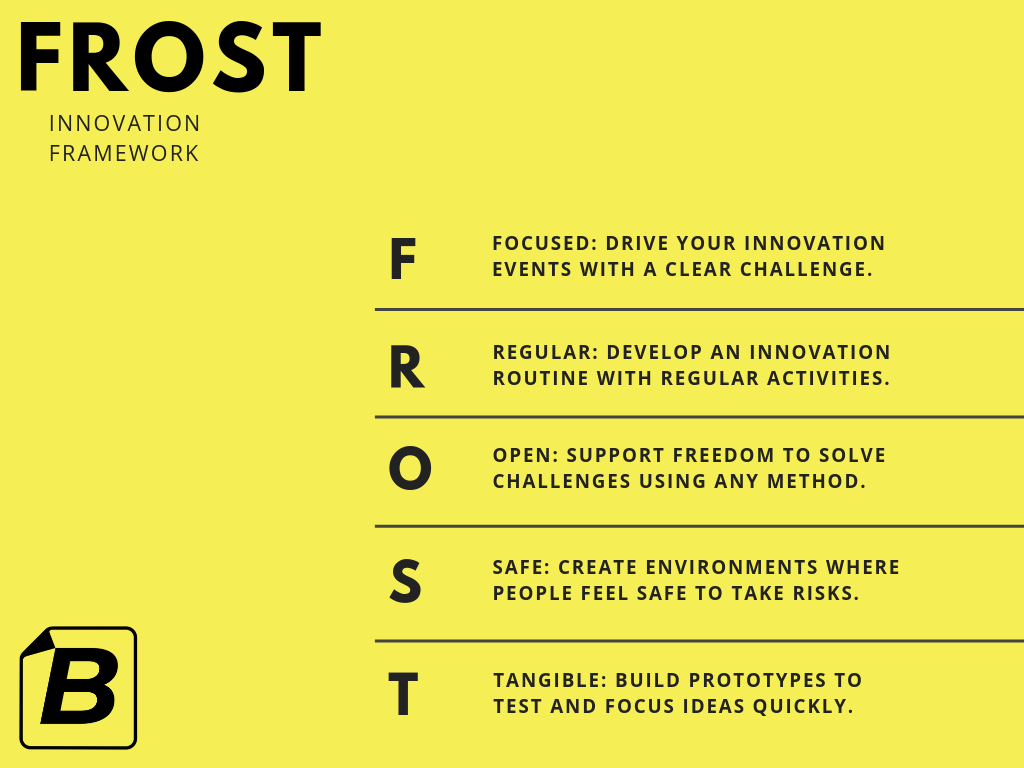
A little heads-up – we’re starting on a new range of templates as part of the FROST Innovation Framework from GAS LABS.
This is a useful new framework that supports medium-to-large organisations in creating productive and strategic in-house innovation capabilities.

We have been busy with Spring Cleaning! The Visio Roadmap Templates needed a good dusting off.
My timeline keeps breaking… please HELP ME!
Some of our customers using Visio 2010+ were seeing compatibility issues. Well, we have fixed them!
These are some of the symptoms that customers have reported
(And we have fixed them!)
Some of our Visio formats have been popular for 10 years. So it is not surprising they need updating!
Contact us if you have any troubles with our Visio Roadmaps.
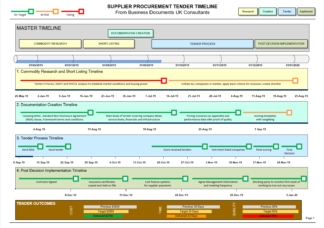
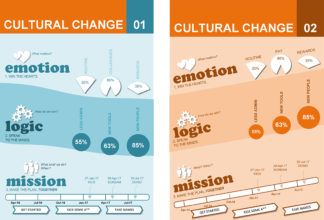
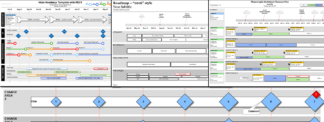
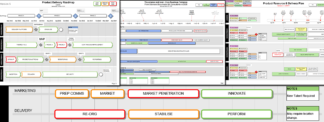
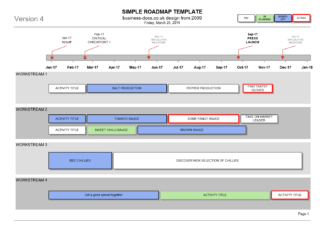
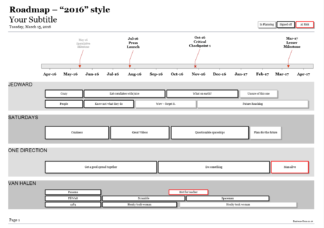
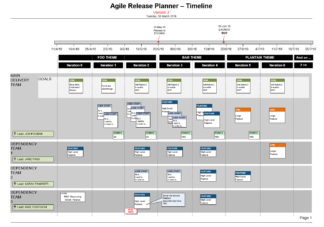
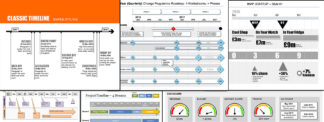
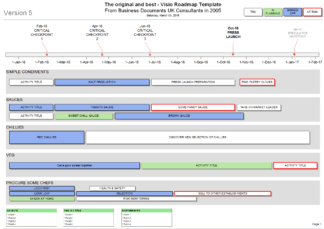
Argghhh – the Project has GONE WRONG!… too often we freak out in an self loathing, whining mess. Especially when there’s more than one team involved. OK.
OK. Take a moment. Stop your teams from running around in circles and screaming.
We usually forget the good things! And,… there will be good things again.
One tendency though, is that negativity can be brought into the Lessons Learned session.
So – how do we keep the Lessons Learned Positive and Productive?
Important attributes for your Facilitator:
A good Facilitator must:
Focus on “how to do better next time” rather than “Who got it wrong / what was wrong this time”.
Norm Kerth’s Prime Directive is generally accepted as a great way of staying positive in your retrospectives :
Regardless of what we discover, we understand and truly believe that everyone did the best job they could, given what they knew at the time, their skills and abilities, the resources available, and the situation at hand.
You can use this Agile Lessons Learned template as a good basis and structure on which to build.
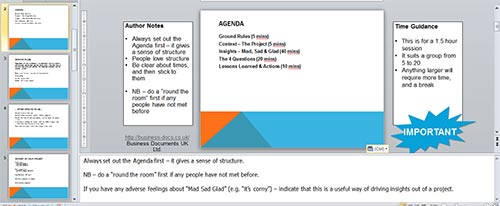
[purchase_link id=”2246″ style=”button” color=”blue” text=”Add the Project Lessons Learned Template to Cart”]
You can find a complete guide to how to run an Agile Lessons Learned Project Review here.
Pods Embed Error: Pod not found.
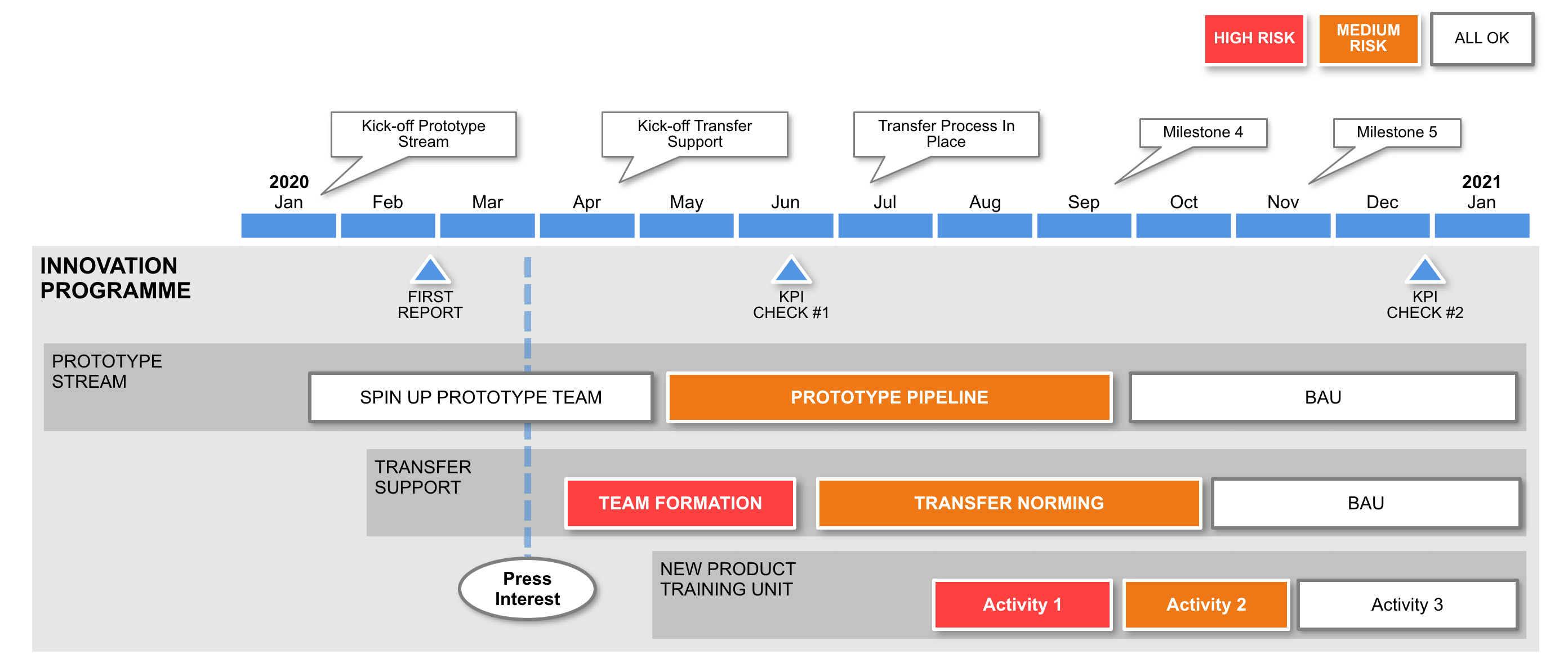
This guide will explain the important parts of a Project Roadmap. It includes workstreams, activities, timelines, risk levels and other elements needed for an effective project roadmap.
1. Quickly communicates project plans and goals.
2. Manages stakeholder expectations.
3. Generates a shared understanding across the teams involved.
4. Communicates plans with other important teams/organisations.
It is a simple diagram format, that shows your project plans over time.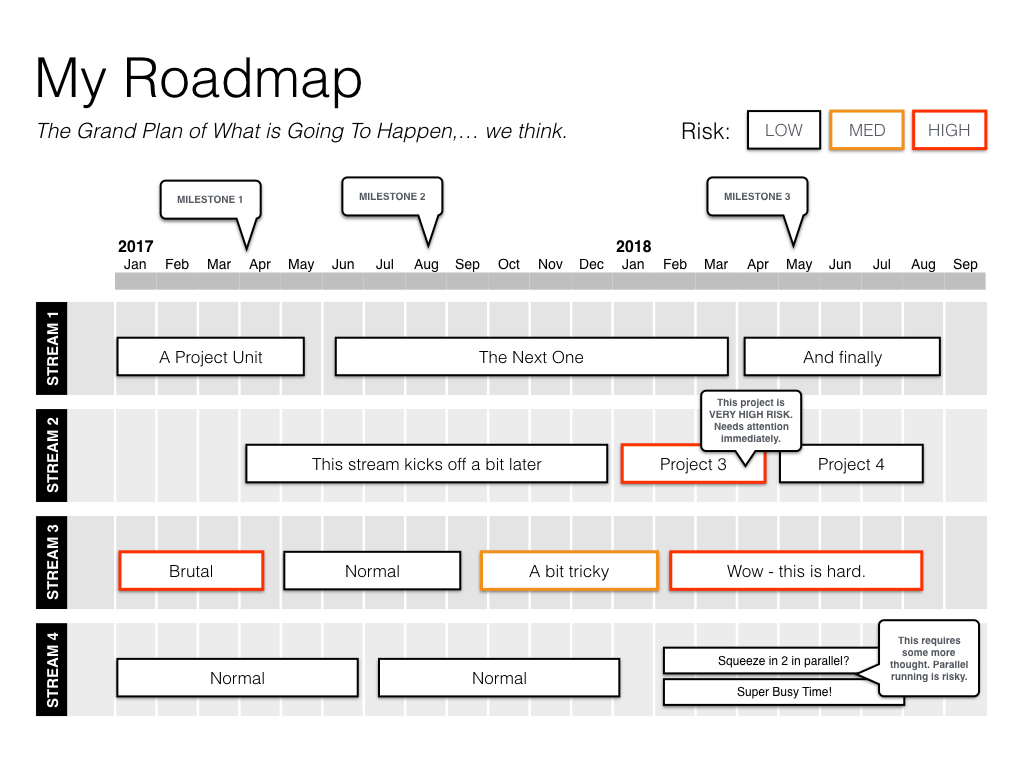
IMPORTANT: A Project Roadmap IS NOT the place for detailed project plans and detailed information.
1. Must Have: The Project Goals articulated; at least in the deliverables listed.
2. Must Have: A timeline – to show when things will happen.
3. Must Have: The high level titles for the big deliverables (don’t get into the detail!!).
4. Should Have: The workstreams in separate “Swim Lanes”.
5. Should Have: Milestones of key events, when you expect them.
6. Could Have: Areas of high risk.
7. Could Have: Areas where you have dependencies.
It gives a sense of the Project Goals: Either explicitly in plain words: “The goal is …”.
It shows the plans for a project in simple terms: not too detailed – just the high-level titles! (keep to 4 or less in each workstream).
It fits on 1 side of paper (or 1 slide in a presentation) to keep it simple!
It shows project plans alongside a timeline.
You can read it and understand it in 3 minutes or less.
It avoids acronyms and team jargon, so that anyone can understand it!
It has your name on it – so people can contact you with questions.
The best project roadmap presentation is one that tells your story simply and quickly. You must give a sense of time, the important project elements, and any key messages you want to highlight.
See our Creating a Roadmap guide here.
The process of creating a roadmap, with key project stakeholders and team members, can be a very useful exercise for your team, because it:-
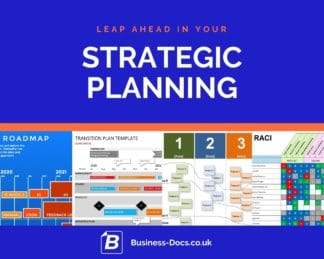
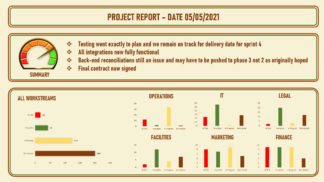
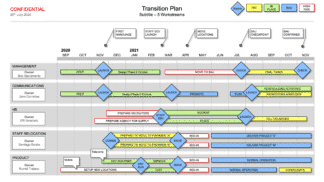
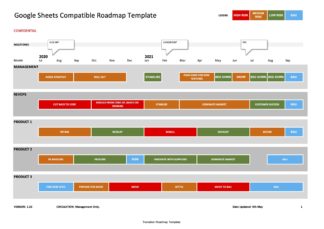
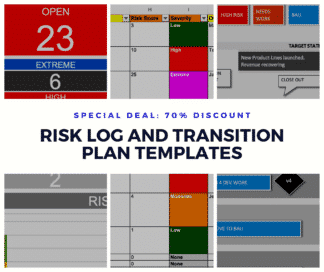
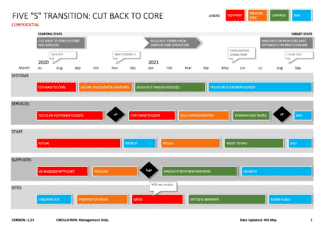
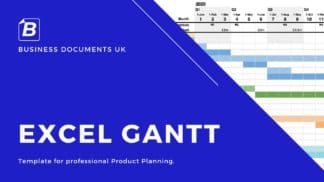
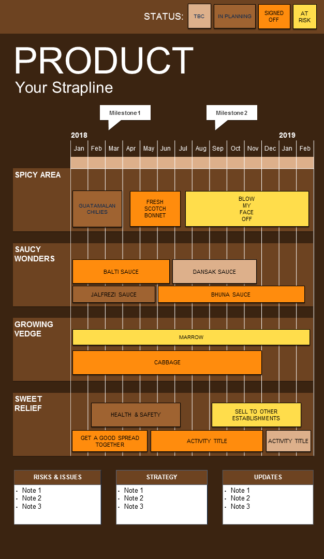
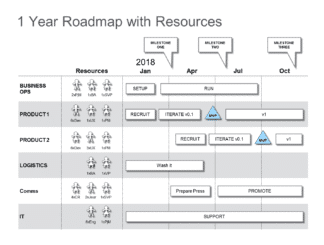
Managing Stakeholders in Agile Projects can be tough in large or old organisations. Have you heard this: “YES. We are agile. But you must tell me what I will get and when!” It’s painful.
Upper management in large organisations and Programme Management structures (e.g. PMO) have a natural conflict of interests (or ‘tension’) with agile principles – i.e.
So – how should we approach the comms around an Agile Project / Programme, and stakeholder management?
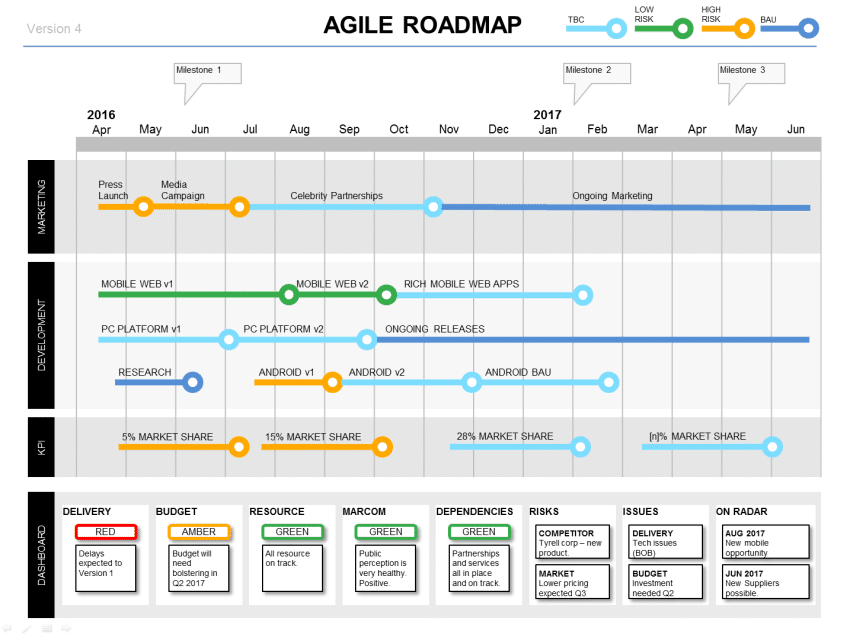
i.e. use High Level Requirements (EPICS / Features / Themes) to define the delivery
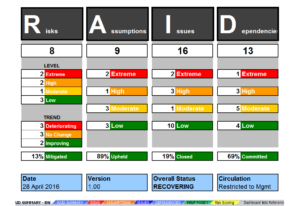
Here are some reporting formats that you can use to communicate Agile plans to Senior Stakeholders:
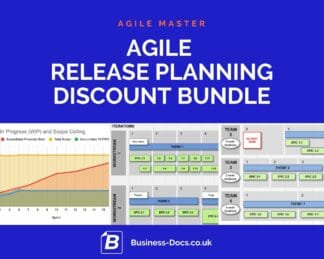
The Agile Release Planning Template Discount Bundle
$ 31.24
Add to cart

Agile Burn-Down and Burn-Up Template Excel
$ 15.99
Add to cart
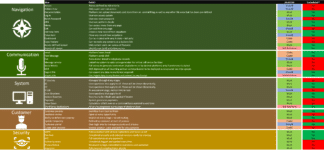
MoSCoW Analysis
$ 9.93
Add to cart
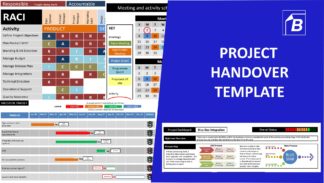
Project Handover PowerPoint
$ 24.99
Add to cart

Google Sheets Compatible Roadmap Template (Excel)
$ 13.03
Add to cart
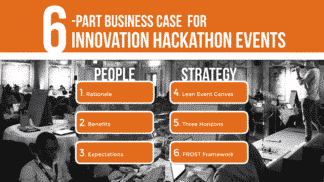
Hackathon Business Case Guide & Template (PPT and Keynote)
$ 45.99
Add to cart